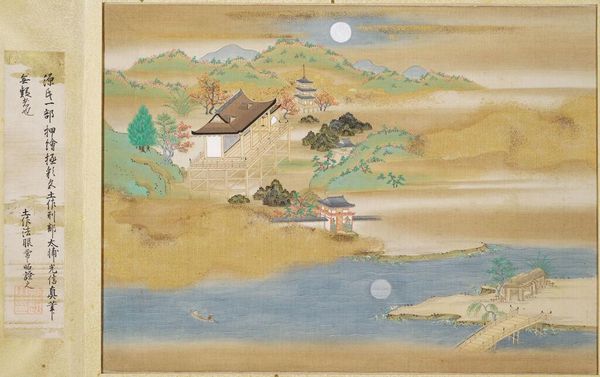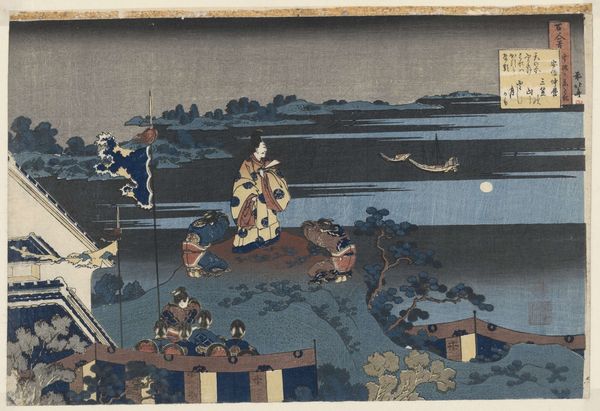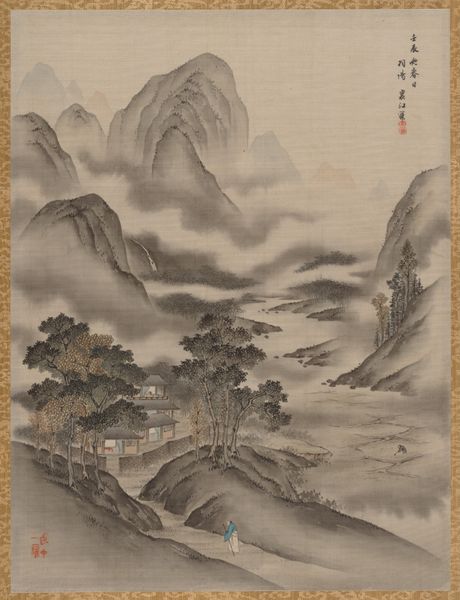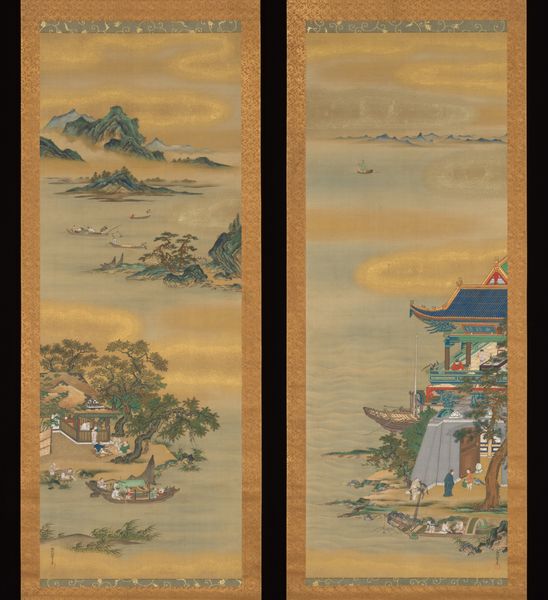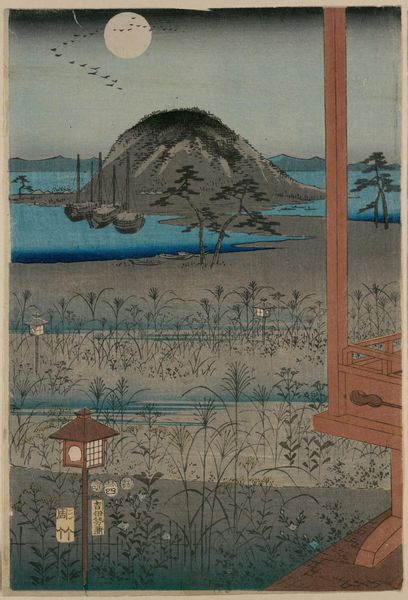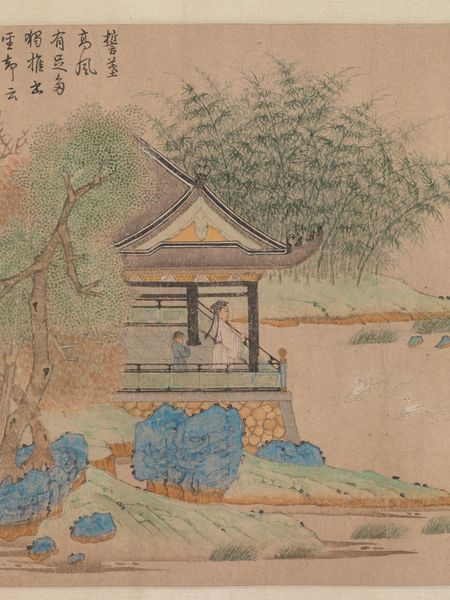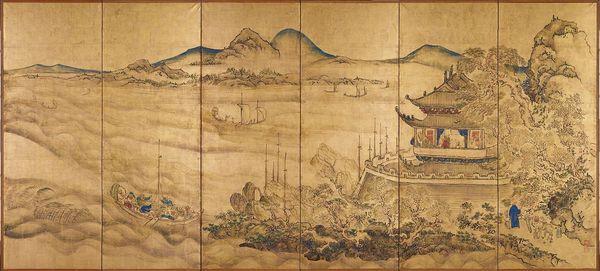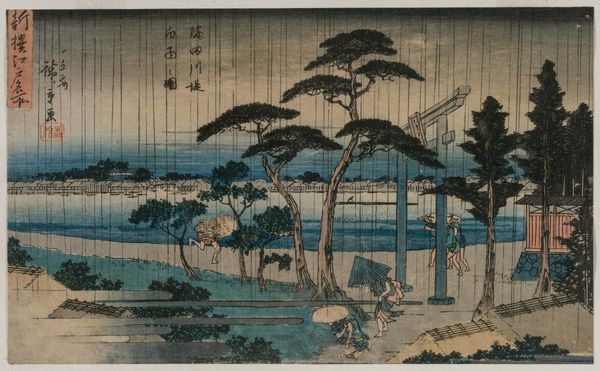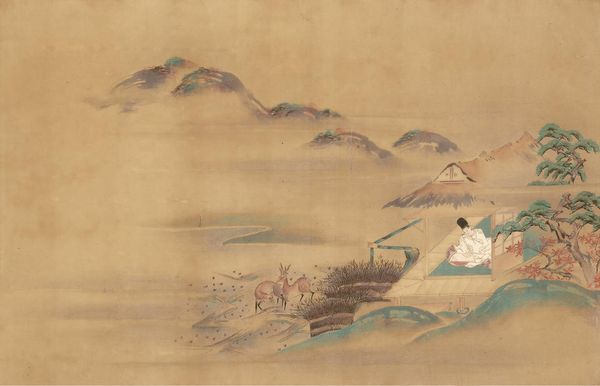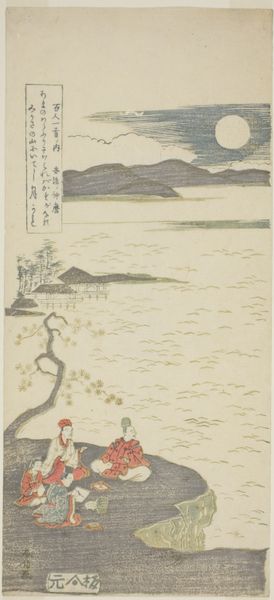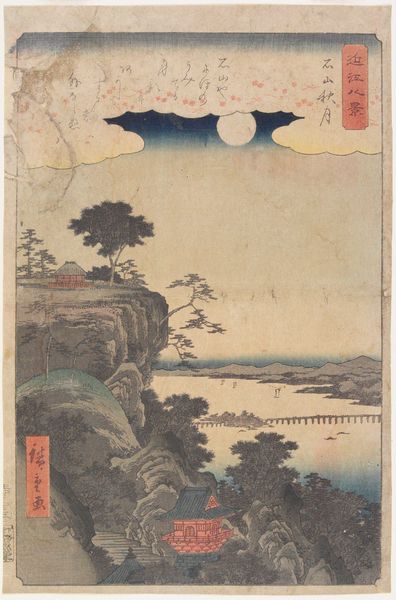
painting, watercolor
#
water colours
#
painting
#
asian-art
#
landscape
#
watercolor
#
yamato-e
Copyright: Public domain
Curator: This painting presents us with a scene entitled "Landscape around Ishiyama-dera and Lake Biwa," attributed to Tosa Mitsuoki. A lovely example of the Yamato-e style using delicate watercolors. Editor: My initial impression is one of tranquility. There’s such softness to the washes and the delicate rendering of the architectural structures against the vast lake and mountainous backdrop. It’s quite serene, isn’t it? Curator: It is indeed. The scene encapsulates a historical moment, reflecting both the site itself and its socio-cultural position. Ishiyama-dera was an important location in Japanese history, a place of worship, study, and artistic inspiration. Such sites served as important meeting grounds for individuals across different socio-economic levels. Editor: You can almost feel the brushstrokes; the way the pigments were handled suggests great mastery of the material. Look at the delicate rendering of the moon reflected in the water. I wonder about the process—how long would it take to layer the colors to create such luminous effects, and who had access to these expensive materials? Curator: That's an important observation. The artistic style, particularly within Yamato-e painting, has a long lineage that was promoted and preserved by the imperial court and artistic circles that gained favor, shaping tastes, commissioning work and further shaping the production and canonization of such artwork. Editor: And those architectural structures fascinate me—especially the temples integrated into the landscape. It suggests an intimate connection between the human built environment and the natural world. It raises the question of labor, too; building, constructing and continually maintaining these monumental forms is a constant act of art-making and preservation. Curator: Precisely. Beyond aesthetics, there's a clear cultural and even political messaging occurring, solidifying a national identity. This artistic rendering of space reinforced these ideologies, placing these landscapes within an approved historical and cultural narrative. Editor: Thinking about the means of its creation makes me reconsider its consumption as well. Were these materials locally sourced, or traded for across long distances? The painting’s physical construction is undeniably intertwined with material culture, which is important to appreciate. Curator: Looking at how artistic tastes shape national identity and public imagery really underscores art’s political agency and continued cultural relevancy, right? Editor: Absolutely. It highlights how the very act of creation, the selection of materials, and their transformation all weave into the history of how we, as a society, have assigned meaning to those objects and landscapes.
Comments
No comments
Be the first to comment and join the conversation on the ultimate creative platform.
